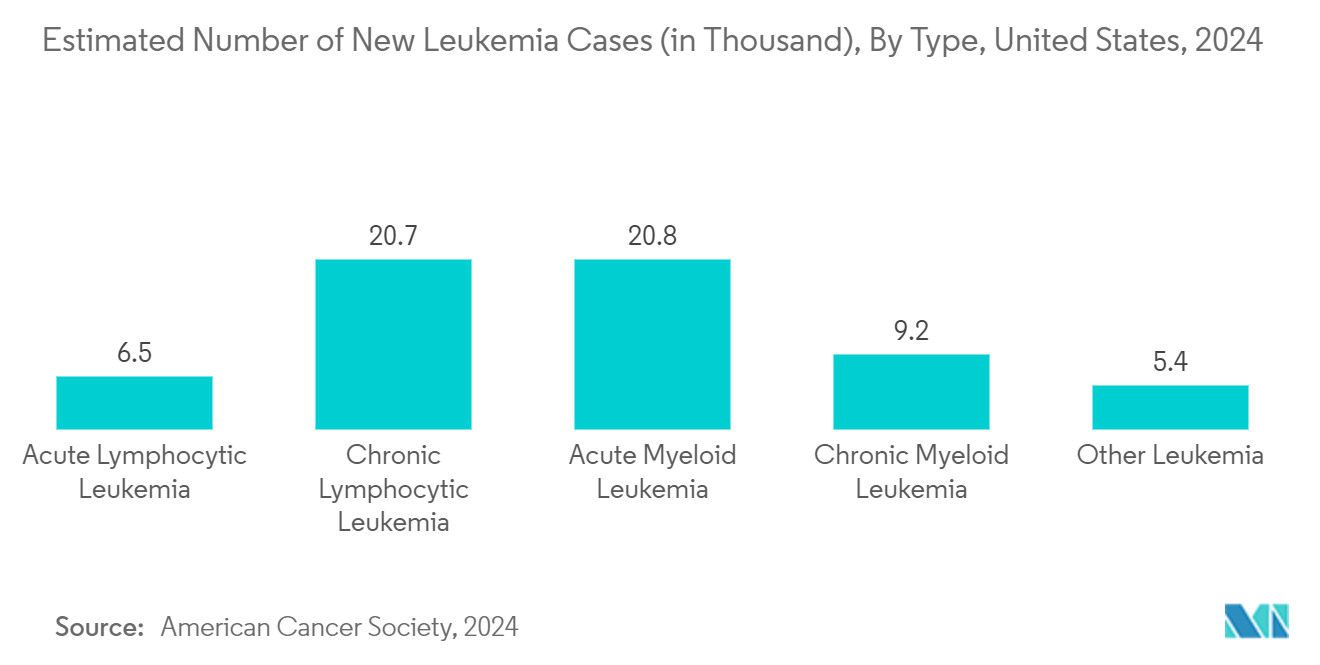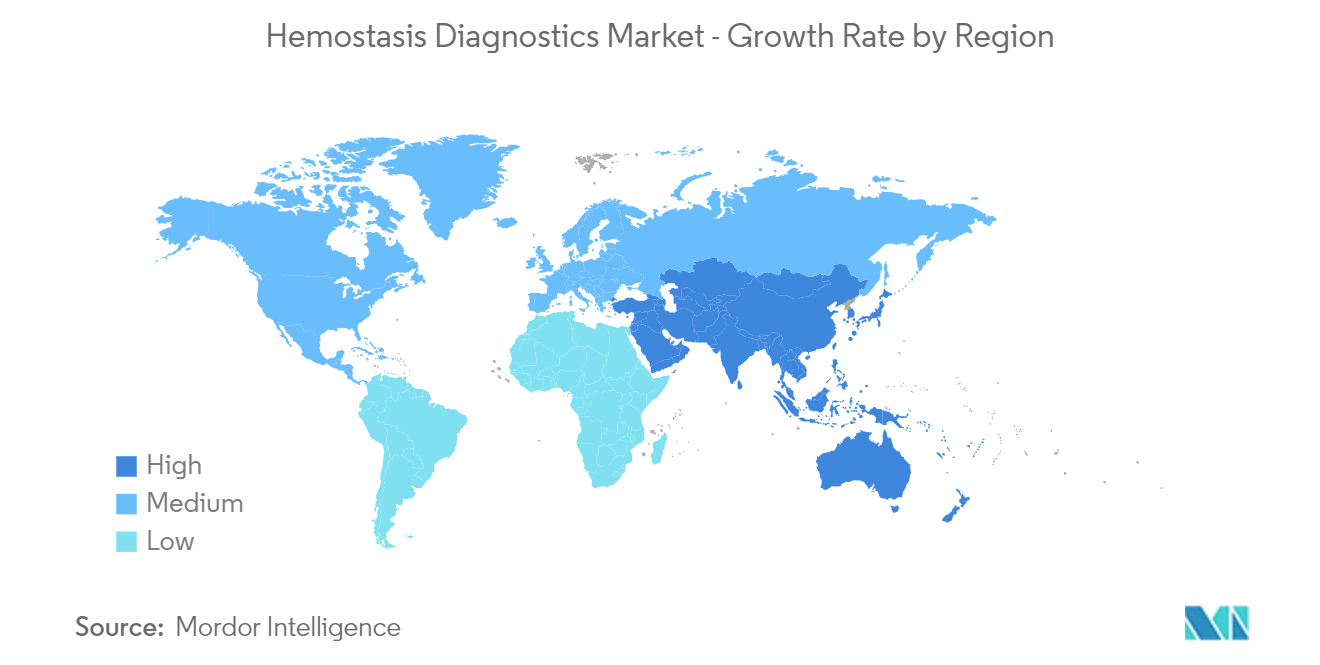Market Trends of Hemostasis Diagnostics Industry
The Point-of-Care Testing Systems Segment is Expected to Hold a Significant Market Share During The Forecast Period.
- The point-of-care (POC) testing system segment is expected to hold a significant market share during the forecast period. Point-of-care testing is vital in emergency departments, intensive care units, and operating rooms as the results are on the spot. The segment is expected to grow due to technological advancement and the introduction of cost-effective and high-quality medical solutions.
- Leukemia and myeloma are also associated with hemostatic complications, which often require the usage of POC diagnostics for better management of the diseases. Hence, the profound burden of leukemia and associated hematology disorders is expected to propel the need for POC testing systems.
- For instance, according to 2024 data from the American Cancer Society, myeloma cases increased from 35,730 in 2023 to 35,780 in 2024. According to the Canadian Cancer Society, the incidence of leukemia is expected to rise from 6,400 in 2023 to 6,600 in 2024. Such an anticipated rise in leukemia and myeloma is likely to fuel the uptake of new-generation hematology point-of-care diagnostics to provide bedside testing, which is projected to bolster market growth over the forecast period.
- The proven efficacy of point-of-care testing systems in providing accurate diagnosis of bleeding disorders is another factor expected to benefit segment growth over the coming years. For instance, according to an article published in Current Anesthesiology Reports in June 2024, point-of-care testing, including viscoelastic coagulation tests such as rotational thromboelastometry (ROTEM) and thromboelastography (TEG), provides excellent point-of-care data on the functional clotting ability of patients with hemophilia and other blood disorders. Therefore, such reliability associated with point-of-care testing systems is further expected to bolster segment growth over the study period.
- Various market players are engaged in strategic initiatives such as research and development to develop an innovative POC testing system, contributing to the segment's growth. For instance, in January 2022, Werfen obtained 510 (k) clearance from the US Food and Drug Administration for its GEM Hemochron 100 whole-blood hemostasis testing system. The system uses Hemochron technology and provides a few minutes of activated clotting time (ACT) results. This POC testing modality enhances patient outcomes in the cardiovascular operating room and other acute care settings. Owing to the advantages point-of-care offers, the segment is expected to propel during the forecast period.
- Therefore, owing to the aforementioned factors, such as the high burden of leukemia and the growing demand for point-of-care testing for leukemia and other types of blood cancer, technological advancements in POC testing are expected to propel the segment growth during the forecast period.

The North America is Expected to Hold a Significant Market Share During The Forecast Period
- North America is expected to hold a significant market share mainly because of the high adoption of advanced automated analyzers, the presence of a large patient pool, the high prevalence of blood clot disorders, growing research efforts, and various organic and inorganic initiatives undertaken by market participants.
- The increased research efforts to develop promising diagnostic tools for bleeding disorders is one of the key factors driving regional market growth. For instance, according to an article published in Frontiers in Bioengineering and Biotechnology in October 2022, the chromogenic approach for the measurement of the Factor VIII activity levels in hemophilia A had shown excellent hemostatic capabilities in investigational studies. Therefore, such efforts to develop promising diagnostic tools are likely to bolster the availability of innovative product portfolios, and this is expected to fuel market growth over the coming years.
- In addition, various recommendations and guidelines from the hematology associations on utilizing several diagnostic tests for hemostasis are further expected to fuel regional market growth. For instance, according to an article published in the International Journal of Laboratory Hematology in November 2023, thrombin clotting time (TT) and the assessment of fibrinogen function are the most promising tests recommended by the International Council for Standardisation in Haematology (ICSH) for hemostasis. Hence, such recommendations are projected to foster market growth over the coming years.
- Therefore, owing to the above-mentioned factors, such as a surge in the burden of bleeding disorders, a growing volume of research studies, and various recommendations from the hematology associations, are expected to boost the North American market over the coming years.


